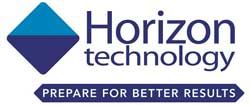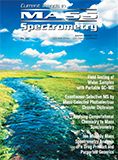Extraction of a Full Suite of Semivolatile Compounds from Drinking Water Using Automated Solid-Phase Extraction
Special Issues
Drinking water is an important part of environmental exposure, especially for small children. Countries around the world have put regulations in place to monitor drinking water quality for a wide range of hazardous compounds.
Drinking water is an important part of environmental exposure, especially for small children. Countries around the world have put regulations in place to monitor drinking water quality for a wide range of hazardous compounds. Methods such as SL 392-2007 in China, the EN methods in Europe, and US methods such as method 525.2, cover a large suite of analytes of concern, extracted using solid phase extraction (SPE) disks and using GC–MS for detection.
US EPA method 525.2 may use SPE to extract the analytes of interest from water samples. It includes a variety of quality control measures to ensure the method is under control throughout the analysis (1). The SPE-DEX® 5000 was used in this study to extract the EPA Method 525.2 analytes from six prepared water samples as described in section 9.3, Initial Demonstration of Laboratory Accuracy and Precision. The test involves measuring 4–7 samples of reagent water spiked at approximately the mid-point of the calibration curve, 2–5 µg/L of the full suite of analytes. For each analyte and surrogate, the spike recovery, expressed as a percentage of the true value, should be 70–130% and the relative standard deviation (RSD) should be <30% to meet method criteria. All six samples were extracted using the same procedure and calibration parameters.
Extraction was performed with the SPE-DEX 5000 Automated Disk Extraction System (2). The SPE-DEX® 5000 is an automated system that conditions the solid phase extraction disk, loads the sample through the disk, rinses the sample bottle, and elutes the sample all without user intervention. Atlantic® C18 high capacity SPE disks were used, DryDisk membrane drying was used to remove residual water from the extract, and GC–MS was used for analysis. Results are shown in Table I for six replicate preparations and show excellent recovery and precision.

CLICK TABLE TO ENLARGE
References
Method 525.2, Determination of Organic Compounds in Drinking Water by Liquid-Solid Extraction and Capillary Column Gas Chromatography/Mass Spectrometry, US EPA https://www.epa.gov/sites/production/files/2015-10/documents/method_525-2_rev-2_1995.pdf, accessed April 12, 2017.
Extraction of a Full Suite of Semivolatile Compounds from Drinking Water using Automated Solid Phase Extraction, AN1141703_01, available from www.horizontechinc.com.

Horizon Technology, Inc.
16 Northwestern Drive, Salem, NH 03079
tel. (603) 893-3663
Website: www.horizontechinc.com

Smarter Sensors, Cleaner Earth Using AI and IoT for Pollution Monitoring
April 22nd 2025A global research team has detailed how smart sensors, artificial intelligence (AI), machine learning, and Internet of Things (IoT) technologies are transforming the detection and management of environmental pollutants. Their comprehensive review highlights how spectroscopy and sensor networks are now key tools in real-time pollution tracking.